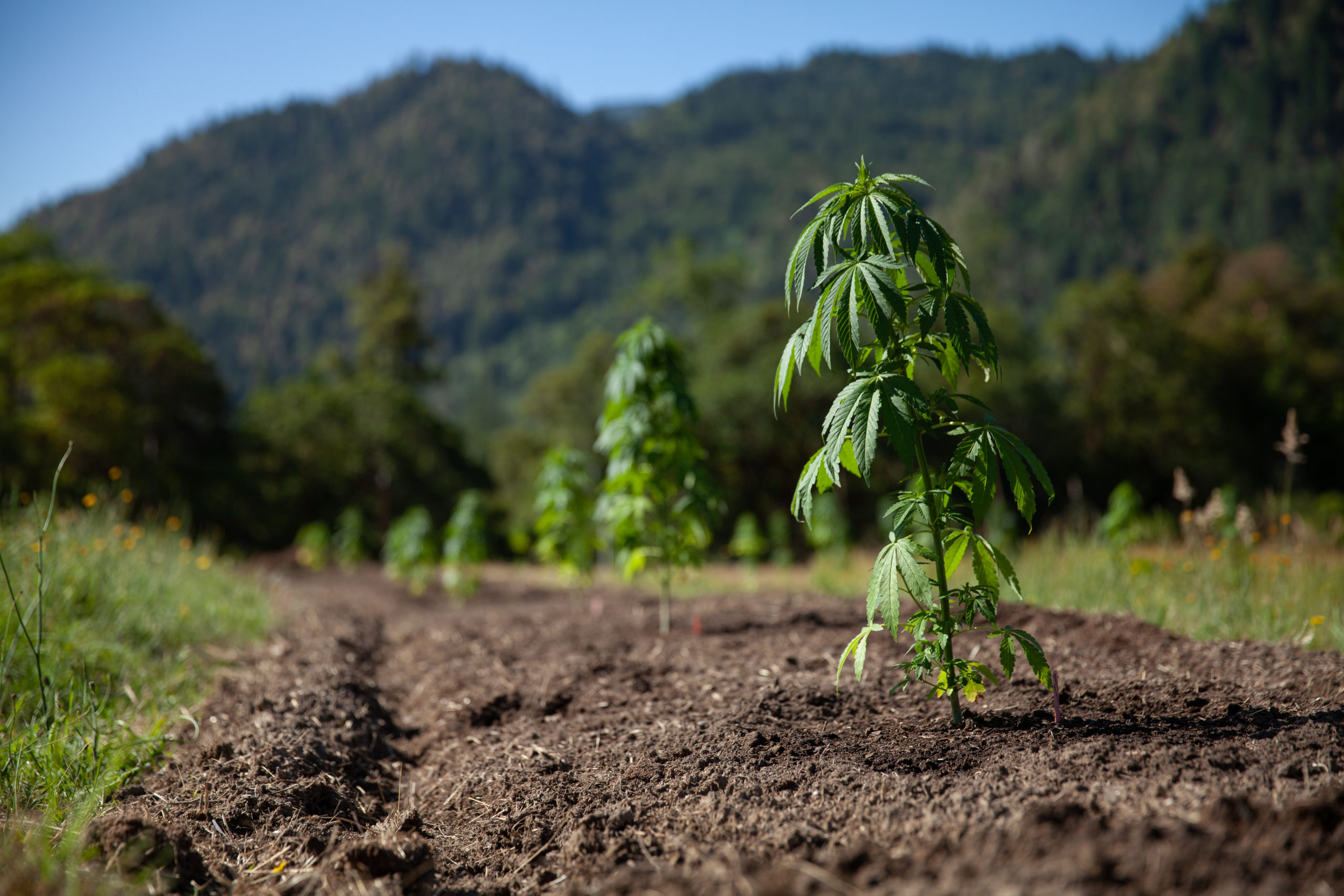A key tenet of the Ganjier Cannabis Sommelier Training is knowing the source and cultivation methodologies used by producers and farmers and their respective effects on cannabis quality.
As more and more states vote to legalize cannabis, the issue of the crop’s environmental impact gains greater importance. Each form of growing – indoor, greenhouse or outdoor – has a distinct environmental impact, yet there is also a way to reduce or mitigate that impact. Indoor growing clearly has the larger footprint and causes the greatest concern, partly because so many states mandate indoor growing and forbid greenhouse or outdoor cultivation.
Of late, there have been reports on the high carbon footprint of cannabis cultivation, seeking to cast blame on cannabis for causing the climate crisis. This is a replay of what happened some years ago when an attempt was made to blame cannabis for the years of California drought.
Yet if cannabis cultivation is evaluated the same as any other agricultural crop, its environmental impact is considerably less than the meat or dairy industry. In California, according to New Frontier Data, legal cannabis is a $5 billion industry, about the same as the State dairy industry, and more than the meat industry.
What is the carbon footprint of all agriculture? Most estimates claim commercial agriculture produces about 10% of the total US carbon footprint of 6558 million metric tons, so agricultural production produces 723 US tons of greenhouse gases. 56% of that number is from meat production, meaning each serving of meat results in 6.61 pounds of CO2 equivalent emissions. (CO2e emissions also include methane [i.e., manure], nitrous oxide and fluorinated gasses.) Transportation, the largest category, creates 29% of US CO2 equivalent emissions.
While exact numbers are difficult to come by, probably about 60% of cannabis cultivation takes place indoors. Estimates of CO2e (carbon dioxide equivalent) range from 2,283 to 5,184 kg per kilogram of dried flower, depending on where it is grown.
“Cannabis grown indoors in Southern California has the lowest emissions in the US, at 143 pounds of carbon dioxide equivalent per ounce of dried cannabis, which is roughly equivalent to burning 7 gallons of gasoline.”
With twenty-eight 1 gram joints per ounce (each joint equivalent to “one serving”), each joint is responsible for 5.1 pounds of CO2e, the same as burning one quart of gas per joint. For a bottle of wine (or 3 “servings”), the CO2e emissions total 2.82 pounds per bottle, less than a pound per glass. Incidentally, many other crops are being grown indoors and in greenhouses these days, and their footprint “per serving” is comparable to that of cannabis grown in the same way.
To continue the comparison, if that ounce of cannabis were grown in a greenhouse, its CO2e emissions would be 20 pounds per ounce. [326.6 kg CO2e per kilogram] At 28 one gram joints per ounce each joint would cost 0.71 pounds CO2e. For a sungrown joint the CO2e is minuscule. [22.7 kg CO2e per kg]. So meat and wine on a per serving basis, have much greater greenhouse gas emissions than cannabis grown in greenhouses or outdoors. [The New Frontier Data 2018 Cannabis Energy Report.]
While there are any number of estimates of the carbon footprint of cannabis, that is only one aspect of how cannabis impinges on the environment. With climate change and drought conditions currently prevailing in California, Colorado, Arizona and other western states, water use becomes a crucial concern.
Considering water use, in a previous blog it was shown that a hamburger (“one serving of meat”) requires 300 gallons of water to produce, a glass of wine (“one serving”) requires 80 to 100 gallons of water, but a one gram joint (“one serving”) from an outdoor cultivator needs only about a gallon of water. Indoor cultivation may use more water than greenhouse or outdoor cultivation but not by much and run-off can be filtered and reused or repurposed.
Not just water consumption, but also waste water quality, fertilizer runoff, pesticides, air quality (dust, odor), workers commute, plastic waste (bags and tarps), nylon netting, wildlife disturbance (both animal and plant), noise pollution, light pollution, spills, debris and garbage, disposal of old soil — all can be environmental problems. But, again, these are environmental issues that are a concern with all agricultural production, whatever the crop, whether grown outdoors, indoors or in a greenhouse.
For cannabis cultivators in California, however, strict rules and site inspections from the State Water Quality Board and the State Water Resource Board closely monitor waste water quality and grant the right to use water for commercial cannabis cultivation. These regulations are much looser for all other agriculture.
In addition, the Department of Fish and Wildlife, is very strict in protecting both plant and animal species. The regulations for cannabis are more stringent than for any other project in any other business. But while it is a good thing these measures protect the environment, to do so for indoor cultivation requires energy expenditure, such as filtering air and water, to prevent pollution from being released.
These rules, of course, only apply to legal growers. Illegal cannabis cultivation doesn’t have to play by the rules and subsequently has a greater environmental impact even though it is undetected by law enforcement and uncounted by statisticians. Clearly, some renegade growers have cut down trees, terraced hillsides and put in ponds without permission, all to the detriment of the environment. Controlling those degradations is an argument for legalization
For indoor and greenhouse growers climate control consumes a great deal of energy, with fans, dehumidifiers, air conditioners and heaters needed to compensate for changing exterior weather conditions. For heating, many indoor and greenhouse growers use propane or natural gas, which also emits polluting greenhouse gases.
The air filtration system is needed to clean the air coming in, especially for greenhouses in areas where nearby farms are spraying pesticides or nutrients and for indoor sites in industrial areas. Air going out also needs to be purified because neighbors often complain of strong cannabis odors. Then too, incoming air may need to be heated or cooled depending on outside temperatures. In fact for both indoor and greenhouse, the HVAC energy demands often are greater than that for the lighting. This energy costs money, one reason indoor costs more than sungrown.
Greenhouse lighting costs are less than indoor because they utilize the sun’s rays for part of their lighting needs. Nonetheless, greenhouse growers often have multiple harvests in a year. Whenever there are more than 9 hours of darkness in the winter months, they need grow lights to prolong the vegetative phase, thus increasing yield, but using electricity to do it.
The carbon footprint could be reduced by requiring that all indoor and greenhouse growers get at least 50% of their electricity from solar panels on the roof or other alternative energy sources and by switching to LED lighting. Greenhouses in rural areas off the grid would need to install large alternative energy production facilities and forgo the use of fossil fuel burning generators. In California, these changes are mandated to happen by 2025.
Indoor and greenhouse growers often flood their grows with Carbon Dioxide (CO2) which stimulates growth, but some of this escapes into the atmosphere. This is the exact opposite of carbon sequestering, which is possible with outdoor cultivation when the waste biomass is composted and added back to the cultivation site.
Similarly, many indoor and greenhouse cultivators mist a crop with sulfur to combat mold and mildew. How much leaks out? And a further consideration is the effect of CO2 gas and Sulfur powder on the health of the people working in the grow room.
Outdoor cultivation, which harvests only one crop a year, generates much smaller CO2e emissions because they have the sun and fresh air. Many legacy sungrown cultivators are off the grid and have solar power installations, but they also have to have fossil fuel burning backup generators. Others rely solely on generators for power.
Their main electrical burden is twofold, first from making compost teas during the growing season which need to brew for 36 to 48 hours and second during harvest season, when fans, dehumidifiers and sometimes even heaters are needed to dry the crop. This is the main source of CO2e emissions. Still at 22kg of CO2e per kilogram the carbon footprint is tiny.
Recently, many legacy farmers are transitioning to regenerative cultivation techniques, such that growing cannabis reinvigorates the soil and sequesters carbon through composting cannabis waste and using wood chips and locally sourced organic manure and compost to create living soil. Additionally, cannabis roots sequester carbon by exuding carbon rich sugars into the soil, which feed the bacteria and fungi in the rhizosphere or root ball, which in turn transform and bring nutrients to the roots.
Planting in the ground, rather than in pots, creates little or no runoff. Regenerative growers do not use pesticides or chemical salt-based fertilizers, so water purification is not necessary. In California, their water use is metered and reported annually to state agencies. Other state and county agencies impose strict limits on grading or terracing and garden expansion, while tree removal for cannabis cultivation is prohibited. And permits are required to install new ponds, roads or bridges.
Some critics claim outdoor farmers’ carbon footprint and environmental impact should include their domestic use because they live on the land and drive back and forth to town on dirt roads. But to be fair then, the CO2e emissions for the workers’ commute and the urban or suburban household electric bill for indoor growers and for all other agricultural workers would need to be added to their environmental impact as well.
Clearly, the impact of greenhouse and outdoor cultivation is considerably less than that of indoor cultivation and of all other agriculture. This is particularly true in California, where all pesticide use on cannabis is prohibited, the regulations are stricter and inspections are more frequent and more stringent than for any other business, whether agricultural, industrial or commercial and more rigorous than any other state. These standards are maintained by extensive lab testing and the Metrc track and trace system.
Now that the medical powers of cannabis have been rediscovered and recognized in statute and it has been declared to be an essential business, cannabis’ environmental impact must be re-evaluated in the context of its myriad uses and its beneficial contribution to society.
The moral of this story is that when looked at in the context of all agriculture, cannabis cultivation has a better environmental profile than most other agricultural businesses in relation to its CO2e emissions, water use, and overall environmental impact.


